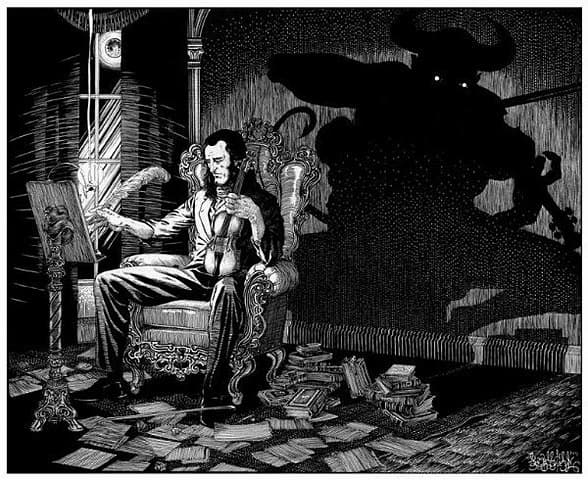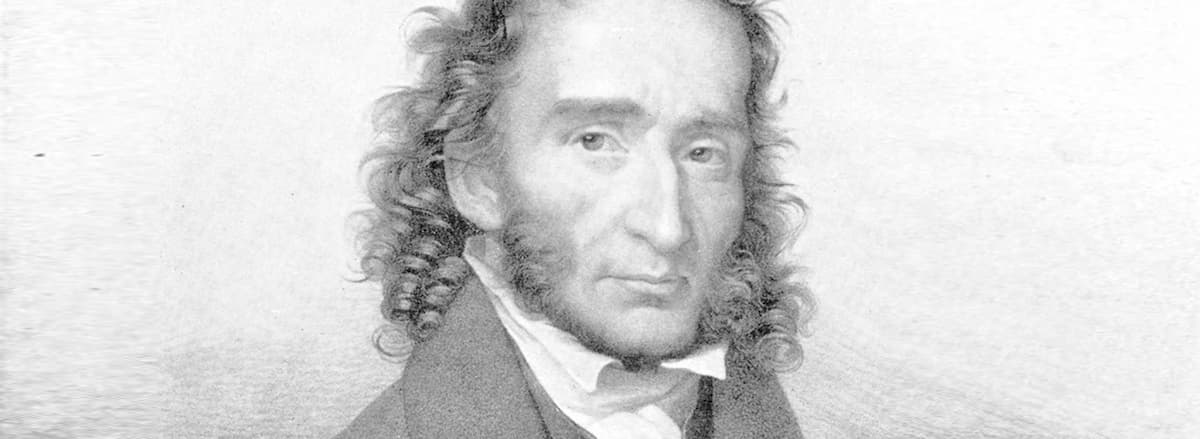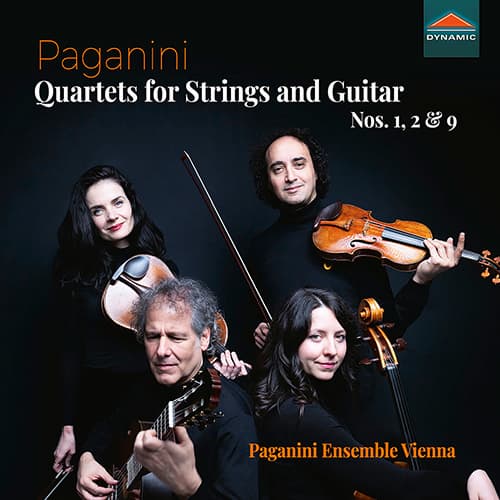We associate the name of Niccolò Paganini 1782–1840) with the violin and his seemingly demonic playing.

The Devilish Paganini
However, the less talented are always quick to impugn the true talent of a virtuoso – the devil had to have a hand! Paganini had a couple of advantages – for the first, he was a great violinist. For the second, he had a very elongated frame – a tall, thin body matched with long, thin fingers that could reach further than other violinists.

Paganini
If we turn to the lesser-known aspects of Paganini, we have two important points: one is that as well as being a master of the violin, he was also a master of the guitar. He preferred to save his guitar performances for private concerts and not for his massive public concerts. The other is that, in addition to his own virtuosic violin compositions, he also wrote chamber music. Some of his finest chamber music were his works for the guitar quartet, a genre of which he was a master and which few others took up.
Paganini wrote over 250 works for a variety of instrumental combinations: solos, duets, and trios, as well as the quartets for violin, guitar, viola, and violoncello.
Paganini wrote 15 guitar quartets for guitar, violin, viola, and cello. His first ones, dating from 1813, are dedicated to friends around the city of Genoa. Only the first six were published in his lifetime, and a few of the remaining 9 remain unpublished even today.
The first quartet of the Opus 4 set was dedicated to Paganini’s sister Nicoletta. This was a wedding gift from the composer to his younger sister, who married on 28 February 1813. The first movement has a slow introduction before moving into the Vivace section, where, unusually, both the first and second themes are given to the viola. The second movement is a minuet and trio, with the trio beginning played as a duo between viola and cello. The final movement is a Theme and Variations, based on a melody that has been compared to a melancholic opera aria. Each variation features a different instrument until the last variation, which in the end becomes a duet for violin and viola.
Paganini made the guitar very much part of the ensemble rather than as a soloist with a string background. Each voice has its own statements, and the use of the guitar augments the usual string sound with strumming and plucking that they find difficult to imitate.
Niccolò Paganini: Guitar Quartet No. 1 in A Minor, Op. 4, No. 1, MS 28 – III. Tema con variazione: Adagietto cantabile (Paganini Ensemble Vienna)

Paganini Ensemble Vienna
The Paganini Ensemble Vienna was formed to bring these Paganini works to life, with a repertoire of chamber works from duets for viola and guitar, duets for violin and viola, works for violin and guitar, trios for strings and guitar, and the 15 quartets.

Niccolò Paganini: Guitar Quartet No. 1 in A Minor
Performed by
Paganini Ensemble Vienna
Official Website
For more of the best in classical music, sign up for our E-Newsletter


